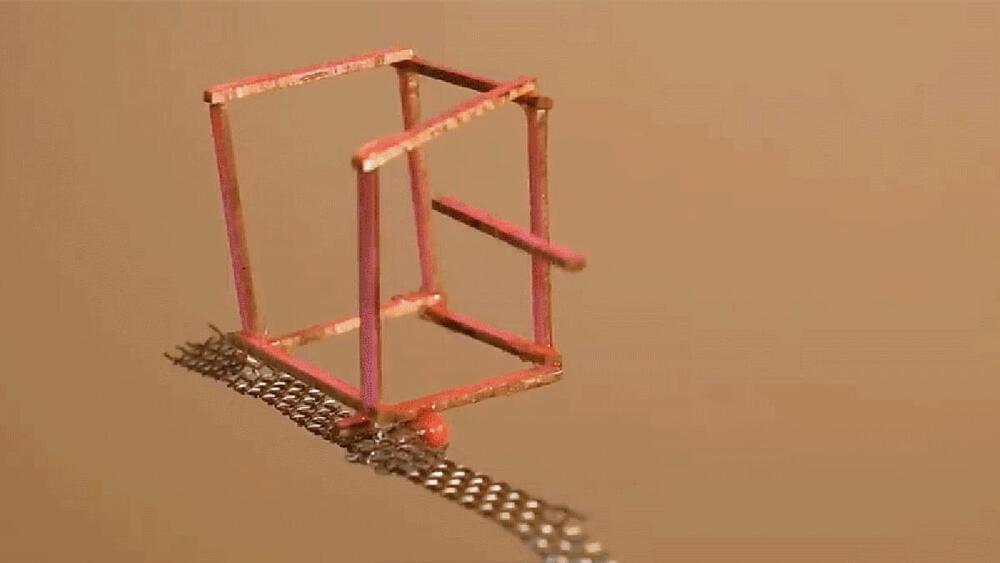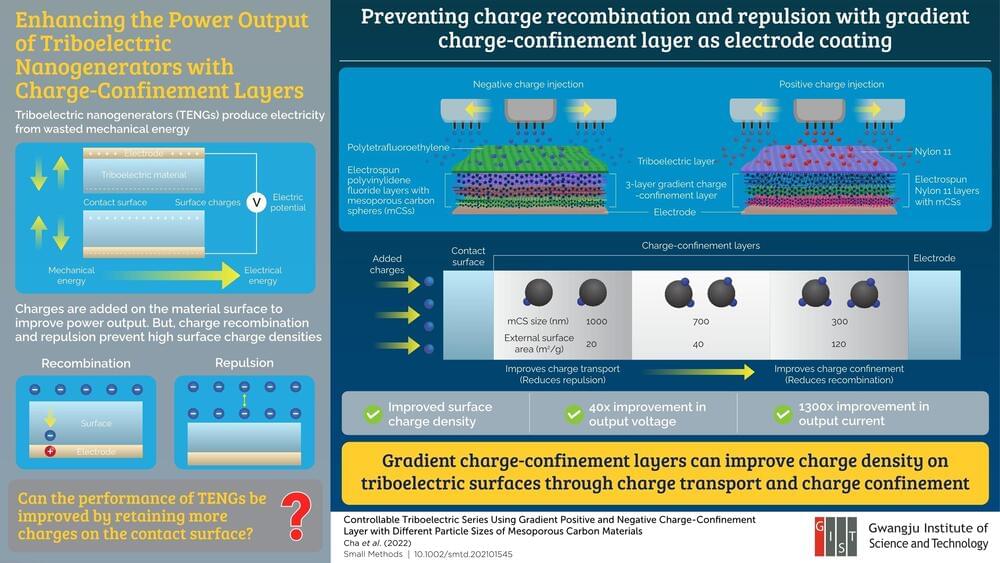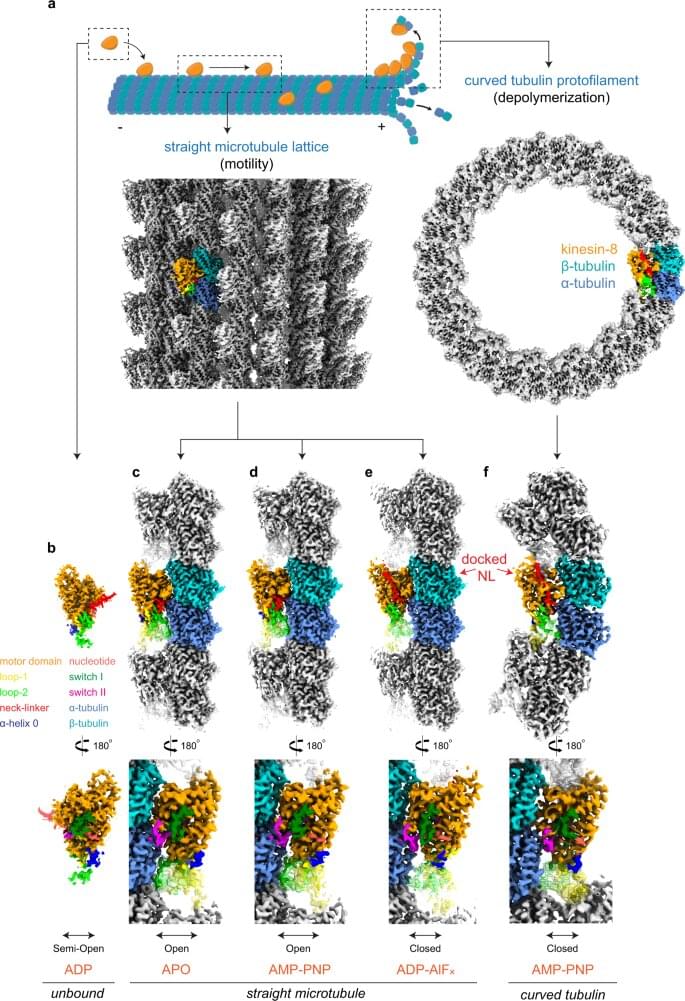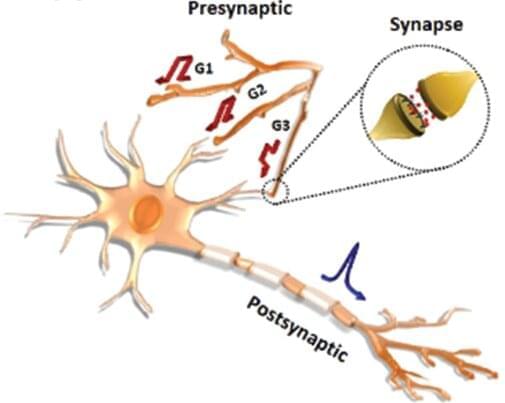Page 3502
Aug 16, 2022
“An engine for the imagination”: an interview with David Holz, CEO of AI image generator Midjourney
Posted by Kelvin Dafiaghor in category: robotics/AI
AI-powered image generators like OpenAI’s DALL-E and Google’s Imagen are just beginning to move into the mainstream. David Holz is the CEO of Midjourney, creators of a popular AI image generator of the same name. In this interview, he explains how the technology works and how it’s going to change the world.
Aug 16, 2022
Tesla CEO Elon Musk has revealed more details about Tesla Optimus, the company’s upcoming humanoid robot, and how he sees the product rolling out over the next decade
Posted by Kelvin Dafiaghor in categories: Elon Musk, government, robotics/AI
Over the last few years, Musk has been getting quite cozy with the Chinese government. In a country known for its protectionism, the CEO managed to score […].
Aug 16, 2022
Elon Musk reveals more details about Tesla Robot, sees people gifting it to elderly parents
Posted by Kelvin Dafiaghor in categories: Elon Musk, government, robotics/AI, transportation
Tesla CEO Elon Musk has revealed more details about Tesla Optimus, the company’s upcoming humanoid robot, and how he sees the product rolling out over the next decade.
Over the last few years, Musk has been getting quite cozy with the Chinese government.
In a country known for its protectionism, the CEO managed to score for Tesla the first car factory in China wholly owned by a foreign automaker.
Aug 16, 2022
The Future of AI-Generated Art Is Here: An Interview With Jordan Tanner
Posted by Kelvin Dafiaghor in categories: blockchains, robotics/AI, virtual reality

Unlike many of the so-called “artists” strewing junk around the halls of modern art museums, Jordan Tanner is actually pushing the frontiers of his craft. His eclectic portfolio includes vaporwave-inspired VR experiences, NFTs & 3D-printed figurines for Popular Front, and animated art for this very magazine. His recent AI-generated art made using OpenAI’s DALL-E software was called “STUNNING” by Lee Unkrich, the director of Coco and Toy Story 3.
We interviewed the UK-born, Israel-based artist about the imminent AI-generated art revolution and why all is not lost when it comes to the future of art. In Tanner’s eyes, AI-generated art is similar to having the latest, flashiest Nikon camera—it doesn’t automatically make you a professional photographer. Tanner also created a series of unique, AI-generated pieces for this interview which can be enjoyed below.
Continue reading “The Future of AI-Generated Art Is Here: An Interview With Jordan Tanner” »
Aug 16, 2022
New information on ‘gigantic jet’ lightning bursts that reach toward space
Posted by Dan Breeden in categories: climatology, satellites

A detailed 3D study of a massive electrical discharge that rose 50 miles into space above an Oklahoma thunderstorm has provided new information about an elusive atmospheric phenomenon known as gigantic jets. The Oklahoma discharge was the most powerful gigantic jet studied so far, carrying 100 times as much electrical charge as a typical thunderstorm lightning bolt.
The gigantic jet moved an estimated 300 coulombs of electrical charge into the ionosphere—the lower edge of space—from the thunderstorm. Typical lightning bolts carry less than five coulombs between the cloud and ground or within clouds. The upward discharge included relatively cool (approximately 400 degrees Fahrenheit) streamers of plasma, as well as structures called leaders that are very hot—more than 8,000 degrees Fahrenheit.
Continue reading “New information on ‘gigantic jet’ lightning bursts that reach toward space” »
Aug 16, 2022
Scientists improve the power output of triboelectric nanogenerators with carbon particles
Posted by Dan Breeden in categories: nanotechnology, particle physics, sustainability
Most of us have felt the shock from static electricity by touching a metallic object after putting on a sweater or walking across a carpet. This occurs as a result of charge build-up whenever two dissimilar materials (such as our body and the fabric) come in contact with each other.
In 2012, scientists from the U.S. and China used this phenomenon, known as “triboelectric effect,” to build a triboelectric nanogenerator (TENG) that converts unused mechanical energy into useful electrical energy. Their device consisted of two triboelectric polymer films with metallic electrodes, which, when brought together and separated, resulted in charge separation and the development of an electric voltage sufficient to power small electronic devices.
Viewed as potential sustainable energy harvesters, efforts have been made to enhance the power output of TENGs by injecting charges to the surface of triboelectric films. However, charge recombination in the electrode and charge repulsion on the surface of the material prevents them from achieving high surface charge densities.
Aug 16, 2022
Understanding how motor proteins shape our cells
Posted by Dan Breeden in category: biotech/medical
Understanding the busy networks inside our cells can help researchers develop new cancer treatments and prevent dangerous fungal infections.
With the help of the Canadian Light Source (CLS) at the University of Saskatchewan, a research team led by John Allingham from Queen’s University and Hernando Sosa from the Albert Einstein College of Medicine has shed light on a protein that regulates the intricate microscopic networks that give cells their shape and helps ship important molecules to diverse locations.
Using the CMCF beamline at the CLS and the cryo-EM facility at the Simons Electron Microscopy Center (SEMC) at the New York Structural Biology Center, the team found the missing pieces of an important puzzle.
Aug 16, 2022
Development of dendritic-network-implementable artificial neurofiber transistors
Posted by Dan Breeden in categories: biological, robotics/AI
Advances in artificial-intelligence-based technologies have led to an astronomical increase in the amounts of data available for processing by computers. Existing computing methods often process data sequentially and therefore have large time and power requirements for processing massive quantities of information. Hence, a transition to a new computing paradigm is required to solve such challenging issues. Researchers are currently working towards developing energy-efficient neuromorphic computing technologies and hardware that are capable of processing massive amounts of information by mimicking the structure and mechanisms of the human brain.
The Korea Institute of Science and Technology (KIST) has reported that a research team led by Dr. Jung ah Lim and Dr. Hyunsu Ju of the Center for Opto-electronic Materials and Devices has successfully developed organic neurofiber transistors with an architecture and functions similar to those of neurons in the human brain, which can be used as a neural network. Research on devices that can function as neurons and synapses is needed so that large-scale computations can be performed in a manner similar to data processing in the human brain. Unlike previously developed devices that act as either neurons or synapses, the artificial neurofiber transistors developed at KIST can mimic the behaviors of both neurons and synapses. By connecting the transistors in arrays, one can easily create a structure similar to a neural network.
Biological neurons have fibrous branches that can receive multiple stimuli simultaneously, and signal transmissions are mediated by ion migrations stimulated by electrical signals. The KIST researchers developed the aforementioned artificial neurofibers using fibrous transistors previously developed by them in 2019. They devised memory transistors that remember the strengths of the applied electrical signals, similar to synapses, and transmit them via redox reactions between the semiconductor channels and ions within the insulators upon receiving the electrical stimuli from the neurofiber transistors. These artificial neurofibers also mimic the signal summation functionality of neurons.
Aug 16, 2022
New programmable materials can sense their own movements
Posted by Dan Breeden in categories: 3D printing, materials
MIT researchers have developed a method for 3D printing materials with tunable mechanical properties, which can sense how they are moving and interacting with the environment. The researchers create these sensing structures using just one material and a single run on a 3D printer.
To accomplish this, the researchers began with 3D-printed lattice materials and incorporated networks of air-filled channels into the structure during the printing process. By measuring how the pressure changes within these channels when the structure is squeezed, bent, or stretched, engineers can receive feedback on how the material is moving.
These lattice materials are composed of single cells in a repeating pattern. Changing the size or shape of the cells alters the material’s mechanical properties, such as stiffness or hardness. For instance, a denser network of cells makes a stiffer structure.
















